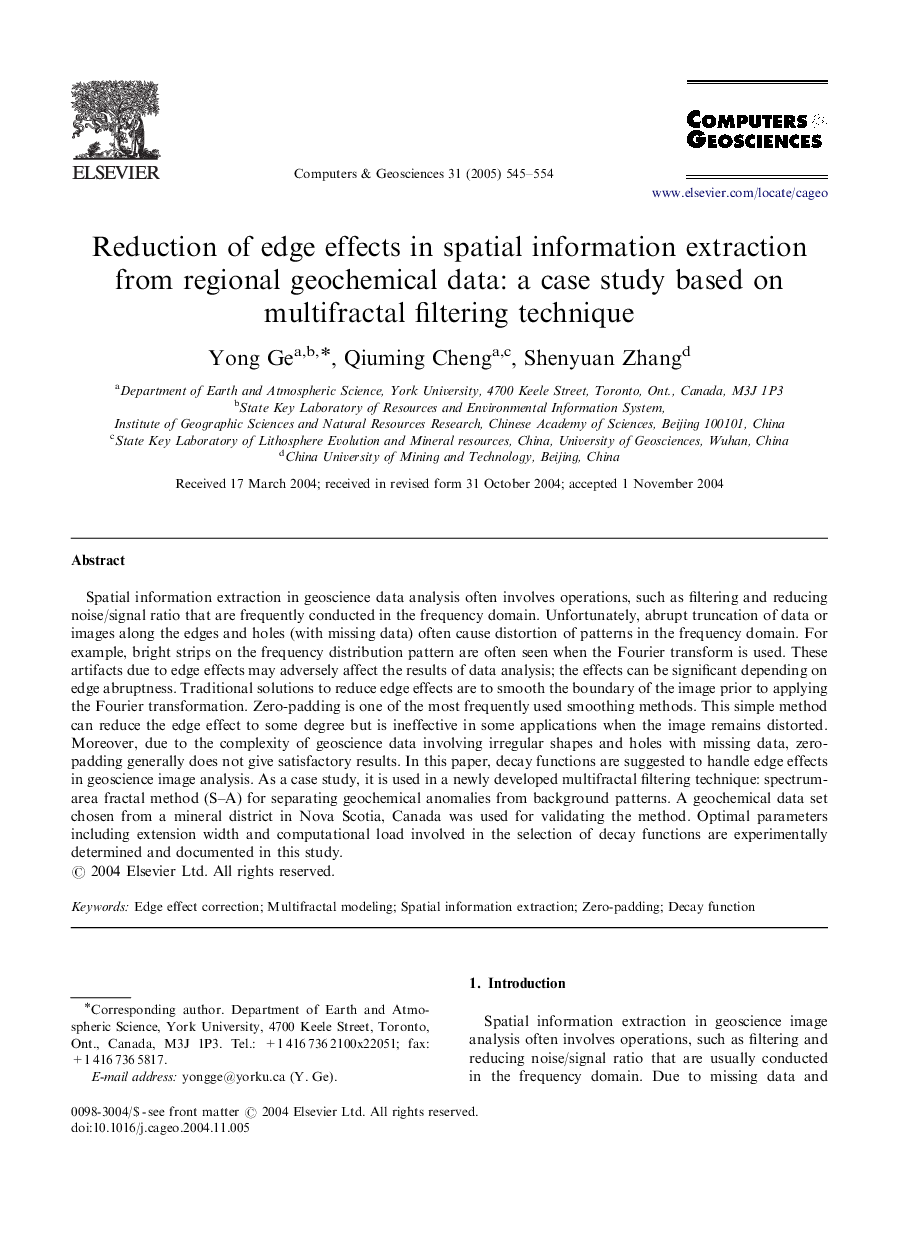| Article ID | Journal | Published Year | Pages | File Type |
|---|---|---|---|---|
| 10352834 | Computers & Geosciences | 2005 | 10 Pages |
Abstract
Spatial information extraction in geoscience data analysis often involves operations, such as filtering and reducing noise/signal ratio that are frequently conducted in the frequency domain. Unfortunately, abrupt truncation of data or images along the edges and holes (with missing data) often cause distortion of patterns in the frequency domain. For example, bright strips on the frequency distribution pattern are often seen when the Fourier transform is used. These artifacts due to edge effects may adversely affect the results of data analysis; the effects can be significant depending on edge abruptness. Traditional solutions to reduce edge effects are to smooth the boundary of the image prior to applying the Fourier transformation. Zero-padding is one of the most frequently used smoothing methods. This simple method can reduce the edge effect to some degree but is ineffective in some applications when the image remains distorted. Moreover, due to the complexity of geoscience data involving irregular shapes and holes with missing data, zero-padding generally does not give satisfactory results. In this paper, decay functions are suggested to handle edge effects in geoscience image analysis. As a case study, it is used in a newly developed multifractal filtering technique: spectrum-area fractal method (S-A) for separating geochemical anomalies from background patterns. A geochemical data set chosen from a mineral district in Nova Scotia, Canada was used for validating the method. Optimal parameters including extension width and computational load involved in the selection of decay functions are experimentally determined and documented in this study.
Keywords
Related Topics
Physical Sciences and Engineering
Computer Science
Computer Science Applications
Authors
Yong Ge, Qiuming Cheng, Shenyuan Zhang,
